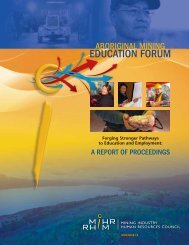RLB_UK_Riders_Digest_2013
RLB_UK_Riders_Digest_2013
RLB_UK_Riders_Digest_2013
You also want an ePaper? Increase the reach of your titles
YUMPU automatically turns print PDFs into web optimized ePapers that Google loves.
Rainwater Harvesting<br />
What is it?<br />
There are two uses of harvested<br />
rainwater, potable and non potable.<br />
Non potable supplies can be as<br />
simple as a drain pipe into a water<br />
butt. A potable system involves<br />
much greater planning and system<br />
costs due to the possibility of<br />
contamination. Systems uses can<br />
provide toilet flushing and irrigation,<br />
washing machines can be supplied,<br />
but may lead to problems involving<br />
odour and discolouration.<br />
Savings rely on the need for non potable supply. The <strong>UK</strong> has<br />
an abundance of water and this keeps our mains supply costs<br />
relatively low. This however appears to be changing with the<br />
<strong>UK</strong>’s first drought orders and recent hose pipe bans in the<br />
South East, prices will surely begin to rise.<br />
How does it work?<br />
Rainwater is collected rather than discarded, reclaimed water<br />
can be used for several applications such as toilet flushing,<br />
irrigation, washing machines and car washing<br />
Indirect pumped systems collect rainwater in a tank and<br />
then pump it to a high level header tank which provides a<br />
head of water to gravity feed the outlets<br />
Direct pumped systems which feed the outlets without the<br />
need for a header tank<br />
<br />
The use of rainwater for toilet flushing and other non potable<br />
uses reduces the consumption of treated mains water<br />
Saves water supply costs<br />
Can help to reduce surface water run-off and risk of flooding<br />
Limitations<br />
Requires water filtration and treatment<br />
Roof materials may effect the quality of harvested water<br />
Cleaning should be regular and debris removed to prevent<br />
water contamination<br />
Installation and maintenance costs may not justify savings<br />
Pumps, filters and sensors require regular management and<br />
maintenance<br />
Providing sufficient water storage capacity may present a<br />
problem<br />
CO2 saving Low<br />
© Rider Levett Bucknall <strong>UK</strong> <strong>2013</strong> 103






